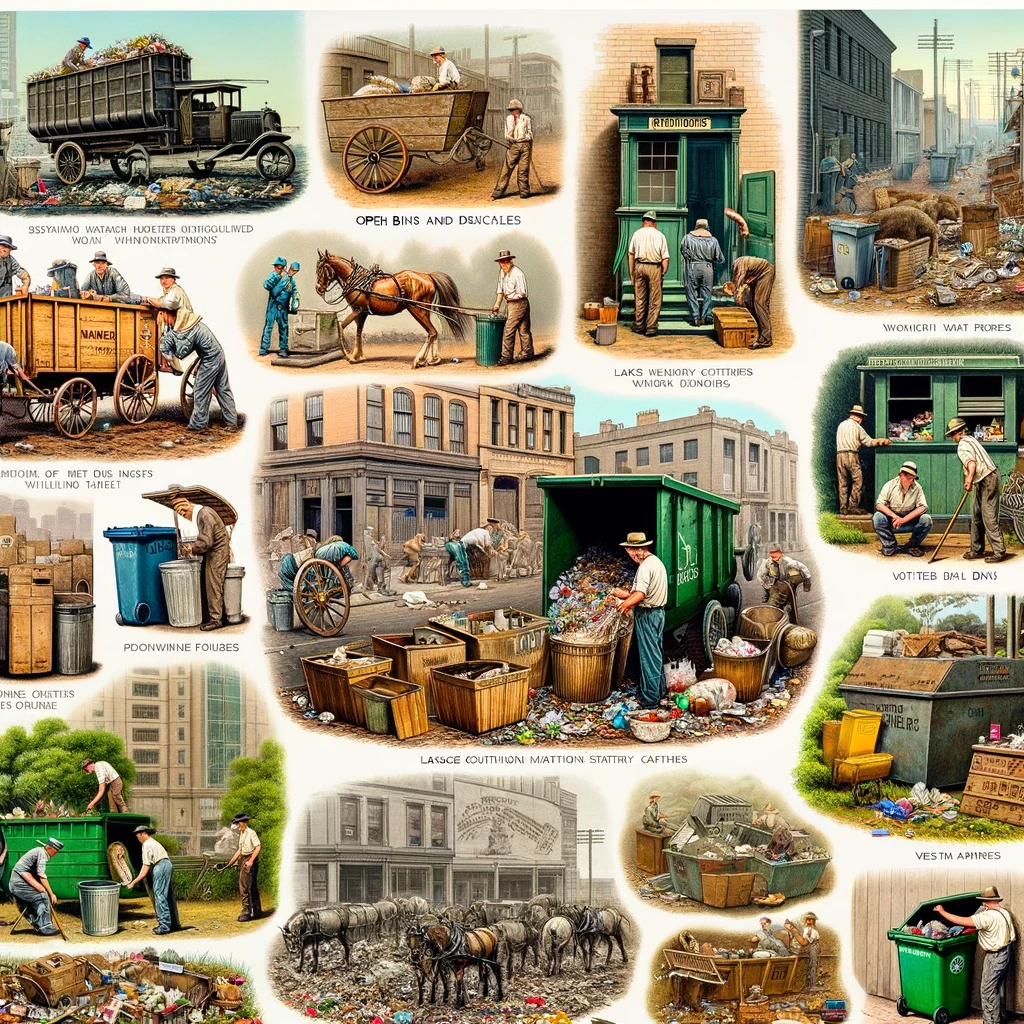History of the Wheelie Bin in Australia

The wheelie bin, a ubiquitous sight on streets around the world, has a rich history that's as interesting as it is practical. This blog post delves into the origins and evolution of the wheelie bin, tracing its journey from a simple idea to an essential part of modern waste management in Australia.
Origins and Early History
The concept of waste management is as old as human civilization itself. From the ancient Romans, who established the first municipal dump around 400 BC, to the organized trash disposal systems in medieval Europe, humans have always sought ways to manage waste. However, the wheelie bin as we know it today has its roots in the mid-20th century.
The Birth of the Modern Wheelie Bin
The modern plastic wheelie bin emerged in Britain in the early 1960s. It was a simple yet revolutionary idea: a bin with wheels attached to it. This innovation made it easier to transport heavy loads of waste to collection points, significantly reducing the physical strain on both homeowners and garbage collectors.
The wheelie bin was initially developed by Frank Rotherham Mouldings in Berkshire, England, around 1968. Originally intended for use within their factory, the bins caught the attention of a visiting health inspector who recognized their broader potential. This led to their widespread adoption across the UK and eventually, the world.
The Wheelie Bin Goes International
The wheelie bin's journey from a British innovation to a global phenomenon is a testament to its practicality. Its design was influenced by similar systems in Germany, where bins on wheels were introduced in 1980. This system was so efficient that it quickly spread to other countries, including Australia.

Australia and the Wheelie Bin
In Australia, the introduction of the wheelie bin marked a significant shift in waste management practices. REMONDIS Australia, one of the country's leading waste, water, and recycling service providers, played a pivotal role in this transition. In 1982, REMONDIS introduced 35,000 plastic wheelie bins imported from Germany for a contract with Penrith City Council, forever changing the Australian streetscape.
The Wheelie Bin Today
Today, the wheelie bin is more than just a waste container; it's a symbol of efficient and hygienic waste management. Its design continues to evolve, with various sizes and colors now available to cater to different waste types and collection systems.
Before the Wheelie Bin - Australia's Earlier Waste Management Methods
Before the advent of the wheelie bin in Australia, waste management was a more labor intensive and less efficient process. Understanding what was used before the wheelie bin helps us appreciate the significant impact this invention has had on modern sanitation practices.
Early Waste Management in Australia
Manual Collection and Disposal
In the early days, waste collection in Australia was a manual process. Households would accumulate their waste, which was then collected by sanitation workers. These workers would physically carry the waste to a collection point, often in metal or wooden bins, which were cumbersome and heavy.
Open Bins and Dumpsters
Before the wheelie bin, open bins and dumpsters were common. These were large, stationary containers into which residents and businesses would throw their waste. The open design often led to problems with pests, odor, and litter being blown away by the wind.
Horse Drawn Carts
In the earlier part of the 20th century, horse-drawn carts were a common sight in Australian streets for waste collection. These carts would travel from house to house, where waste was loaded manually. This method was not only time-consuming but also posed health risks due to the lack of proper waste containment and sanitation.

Lack of Standardization
There was a lack of standardization in waste containers, leading to a variety of makeshift solutions. Households used whatever containers they had available, which could range from wooden crates to metal drums. This inconsistency made waste collection more challenging and less efficient.
Environmental and Health Concerns
The earlier methods of waste disposal raised significant environmental and health concerns. The absence of sealed containers led to the attraction of vermin and the spread of diseases. Moreover, the inefficient disposal methods contributed to pollution and the contamination of water sources.
Conclusion
The wheelie bin's journey from a simple idea to a global standard in waste management is a story of innovation and practicality. It highlights how a simple change can have a profound impact on our daily lives and the environment. As we continue to seek sustainable and efficient waste management solutions, the wheelie bin stands as a reminder of the power of simple, effective design.